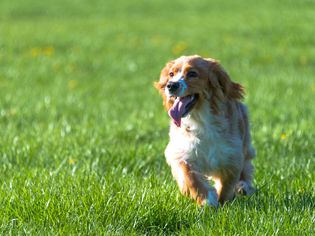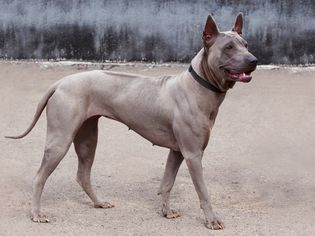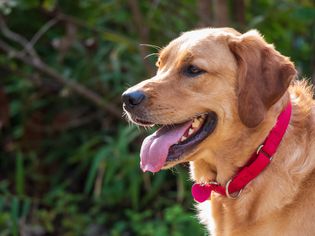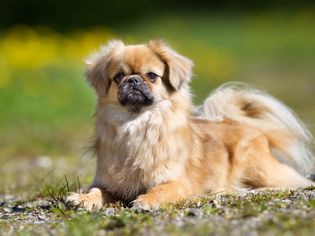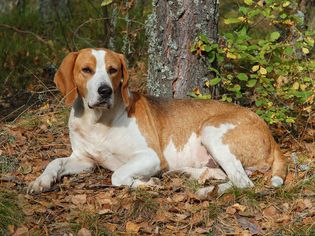The German wirehaired pointer is a medium-large sporting dog breed from Germany with a wiry, medium-length coat that helps to differentiate it from its cousin, the German shorthaired pointer. The dog was specifically bred for this weather-resistant coat, so they could be used for hunting in harsh terrain and water. They also have webbed feet to help them in the water.
Overall, German wirehaired pointers have a muscular build with large drop ears and a medium-length beard and eyebrows. They are loyal and fun-loving, and they make great dogs for active people.
Learn all about the German wirehaired pointer, including the breed’s history, temperament, and more.
Breed Overview
Group: Sporting
Height: At least 22 inches (females); 24 to 26 inches (males)
Weight: 50 to 70 pounds
Coat: Wiry, medium-length double coat
Coat Color: Liver or liver and white with/without ticked, spotted, or roan markings
Life Span: 14 to 16 years
Temperament: Affectionate, friendly, energetic
Hypoallergenic: No
Origin: Germany
Characteristics of the German Wirehaired Pointer
German wirehaired pointers generally have an enthusiastic and eager-to-please personality. A high energy level also helps to shape their temperament, and they love to play.
| Affection Level | High |
| Friendliness | High |
| Kid-Friendly | Medium |
| Pet-Friendly | Medium |
| Exercise Needs | High |
| Playfulness | High |
| Energy Level | High |
| Trainability | High |
| Intelligence | High |
| Tendency to Bark | Medium |
| Amount of Shedding | Medium |
History of the German Wirehaired Pointer
While dog breeders in Britain created hunting dogs that were specialized to work in a certain type of environment, such as either land or water, breeders in Germany wanted all-purpose dogs.
The wirehaired canine coat caught on during the early 1800s among German dog fanciers, as it protected the dogs against weather, water, and rough brush and terrain. The German wirehaired pointer broke out as a separate breed in the latter part of the 1800s.
This dog's trademark coat was achieved through crosses among the German shorthaired pointer, pudelpointer (a poodle-pointer mix), wirehaired pointing griffon, and other breeds.
The German wirehaired pointer made its way to North America in the 1920s. The American Kennel Club first recognized it in 1959.
German Wirehaired Pointer Care
Aim to spend a fair amount of time exercising your dog each day. Fortunately, the German wirehaired pointer's grooming needs are straightforward, and they typically take well to training.
Exercise
Plan on at least two hours per day of exercise for your German wirehaired pointer. Ideal activities include:
- Long walks
- Running
- Hiking
- Swimming
- Vigorous playtime
Dog sports, such as agility and dock diving, can help to exercise this intelligent canine’s mind and body. Puzzle toys can present a mental challenge as well.
Be sure to keep your German wirehaired pointer on a leash or in a securely fenced area when outside. This breed’s high prey drive can cause the dog to run off chasing small animals and other perceived prey, and recall can be difficult to achieve.
Grooming
Brush your German wirehaired pointer’s coat weekly to remove loose fur and prevent tangles. Plan on periods of higher shedding, often when the weather warms, when you’ll have to brush more frequently to keep up with the loose fur.
Bathe your dog roughly once a month, depending on how dirty they get. Check their ears at least weekly for wax buildup, dirt, and irritation. And make sure to dry their ears well after a bath or swimming.
Also, trim your dog’s nails every month on average or as needed. Aim to brush their teeth every day.
Training
German wirehaired pointers tend to be smart and eager to please. These dogs typically respond well to positive-reinforcement training methods, such as treats and praise.
Begin training and socialization from an early age to instill good manners and prevent bad habits from forming. A puppy class is ideal to teach basic commands and behaviors.
One area of training you might have to work extra on is teaching your dog to be okay when you have to leave them alone. German wirehaired pointers prefer to be with their people as much as possible and might become destructive when left alone for long stretches.
A professional dog trainer or behaviorist can give you tips to combat separation anxiety and its symptoms such as excessive chewing. But this breed generally is best for a household where someone is home for most of the day.
Common Health Problems
German wirehaired pointers are typically healthy overall, but they are prone to some hereditary health issues, including:
- Hip and elbow dysplasia: These orthopedic conditions affect the hips and elbows. They can cause difficulty moving, pain, and exercise intolerance.
- Autoimmune thyroiditis: This condition is common in the German wirehaired pointer. It causes the body to attack the thyroid gland, and can cause hypothyroidism.
- Eye problems: German wirehaired pointers can develop eye problems like progressive retinal atrophy (PRA), which can lead to blindness, and ectropion and entropion, which affect the eyelids.
- Heart problems: German wirehaired pointers can inherit or develop heart problems, such as aortic stenosis and sick sinus syndrome.
- Von Willebrand disease: This affects a dog’s clotting ability, resulting in uncontrolled bleeding.
Diet and Nutrition
Always make sure fresh water is available for your German wirehaired pointer, and feed your pointer a quality canine diet that’s nutritionally balanced. It’s typical for German wirehaired pointers to be fed two measured meals a day.
Check with your vet for the proper amount and type of food to ensure that you’re meeting your dog’s individual needs. Some dogs need special diets based on their age, activity level, and health conditions.
Where to Adopt or Buy a German Wirehaired Pointer
German wirehaired pointers are relatively common. So be sure to check local animal shelters and rescue groups for a dog in need of a home. If you’re looking for a puppy from a reputable breeder, expect to pay around $800 to $2,000.
For more information to help you find a German wirehaired pointer, check out:
- German Wirehaired Pointer Club of America
- National German Wirehaired Pointer Rescue
German Wirehaired Pointer Overview
The German wirehaired pointer is a loyal, affectionate, and intelligent dog breed that is a good option for active families. These dogs have a high prey drive, so that’s something to keep in mind if you have other pets or are planning on getting other pets.
Pros of German Wirehaired Pointers
- Good for an active individual or family
- Loyal and loving
- Minimal grooming needs
Cons of German Wirehaired Pointers
- High prey drive
- Can become destructive when left alone
- Needs lots of exercise and mental stimulation
More Dog Breeds and Further Research
Do thorough research before bringing home a German wirehaired pointer to ensure that the breed is right for your lifestyle. Talk to breed owners, rescue groups, reputable breeders, and veterinary professionals. And spend some time around German wirehaired pointers, too, if possible.
If you’re interested in similar breeds, check out:
- German Shorthaired Pointer
- Pointer
- Weimaraner
There’s a whole world of potential dog breeds out there—with a little research, you can find the right one to bring home!
- What's the difference between a German wirehaired pointer and a German shorthaired pointer?
German wirehaired and shorthaired pointers are related and look quite similar. However, the wirehaired version has a longer, more wiry coat, and tends to be slightly taller and heavier than the shorthaired version.
Are German wirehaired pointers good family dogs?German wirehaired pointers tend to be moderately good with kids. With proper training and socialization, they can be a good fit for a family with respectful older children. But they might be too exuberant around young kids.
Are German wirehaired pointers aggressive?Well-trained and socialized German wirehaired pointers tend to be open to meeting strangers and don’t typically display aggression. However, some might view smaller household pets as prey.

